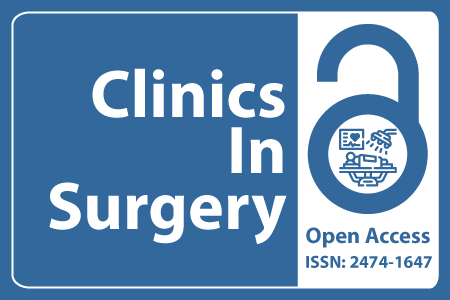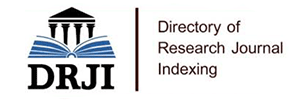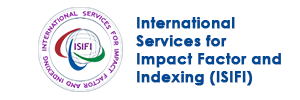
Journal Basic Info
- Impact Factor: 1.995**
- H-Index: 8
- ISSN: 2474-1647
- DOI: 10.25107/2474-1647
Major Scope
- Neurological Surgery
- Plastic Surgery
- Otolaryngology - Head and Neck Surgery
- Orthopaedic Surgery
- Gynecological Surgery
- Pediatric Surgery
- Transplant Surgery
- Emergency Surgery
Abstract
Citation: Clin Surg. 2019;4(1):2485.Research Article | Open Access
Impact of Additional Abdominal Approach to Transanal One Stage Endorectal Pull-Through in Treatment of Hirschsprung’s Disease
Ho Huu Thien, Cao Xuan Thanh, Nguyen Thanh Xuan and Nguyen Huu Son
Department of Pediatric and Abdominal Emergency Surgery, Hue Central Hospital, Vietnam
Pediatric Center, Hue Central Hospital, Vietnam
*Correspondance to: Nguyen Huu Son
PDF Full Text DOI: 10.25107/2474-1647.2485
Abstract
Objective: The Transanal One-Stage Endorectal Pull-Through (TOSEPT) procedure sometimes requires assistance by an abdominal approach to complete the operation. Reasons for this were usually a short mesocolon, an unexpected long a ganglionic segment or pelvis inflammation. The impact of an additional abdominal approach to the outcome of TOSEPT in the treatment of Hirschsprung’s Disease (HD) in children has not been reported in the literature. This study aims to rectify this by evaluating the impact of an assisted abdominal approach in the outcomes of the TOSEPT in children with HD. Materials and Methods: A retrospective study was conducted at surgical pediatric department of Hue central hospital. All consecutive medical records of patients operated on for HD in our department between June 2010 and June 2018 were retrieved and analyzed. Results: A total of 446 consecutive patients operated on for HD with histopathological proof were retrieved from our databases. About 66 (14.79%) patients with HD who required TOSEPT with an additional abdominal approach to complete the operation for inclusion in this retrospective study. About 44 (66.66%) patients were under 12 months old. Two additional abdominal approaches were included in the study: open procedures (78.79%) and laparoscopic procedures (21.21%). The reasons for the additional approaches were sigmoid colon adherent to lateral abdominal wall (24.24%), pelvic inflammation (18.18%), an extremely dilated colon and rectum (6.06%) or long aganglionic segment (51.51%). Length of the resected colon: 13.30 ± 3.45 cm (open group) and 19.70 ± 4.50 cm (laparoscopic group). Average operative time: 156 ± 12 minutes (open group) and 170 ± 14 minutes (laparoscopic group). No deaths or intra-operative complications were recorded in this study. No postoperative complication occurred in the laparoscopic group. Grade II complication based on Dindo-Clavien classification occurred in 14 (21.21%) of the open group and one (1.51%) grade III complication. The length of hospital stay was shorter in the laparoscopic group at 5 ± 1.5 days compared to 7 ± 2.5 days for the open group. All of the complications were grade I or II, mainly enterocolitis at 3-month follow-up. Conclusion: Additional abdominal approach impacts on post-operative results of TOSEPT procedure for HD but not on outcome of disease. Laparoscopic surgery as the additional abdominal approach should be used to reduce the complications.
Keywords
Hirschsprung’s disease; Transanal one-stage endorectal pull-through; Additional abdominal approach
Cite the article
Thien HH, Thanh CX, Xuan NT, Son NH. Impact of Additional Abdominal Approach to Transanal One Stage Endorectal Pull-Through in Treatment of Hirschsprung’s Disease. Clin Surg. 2019; 4: 2485.













